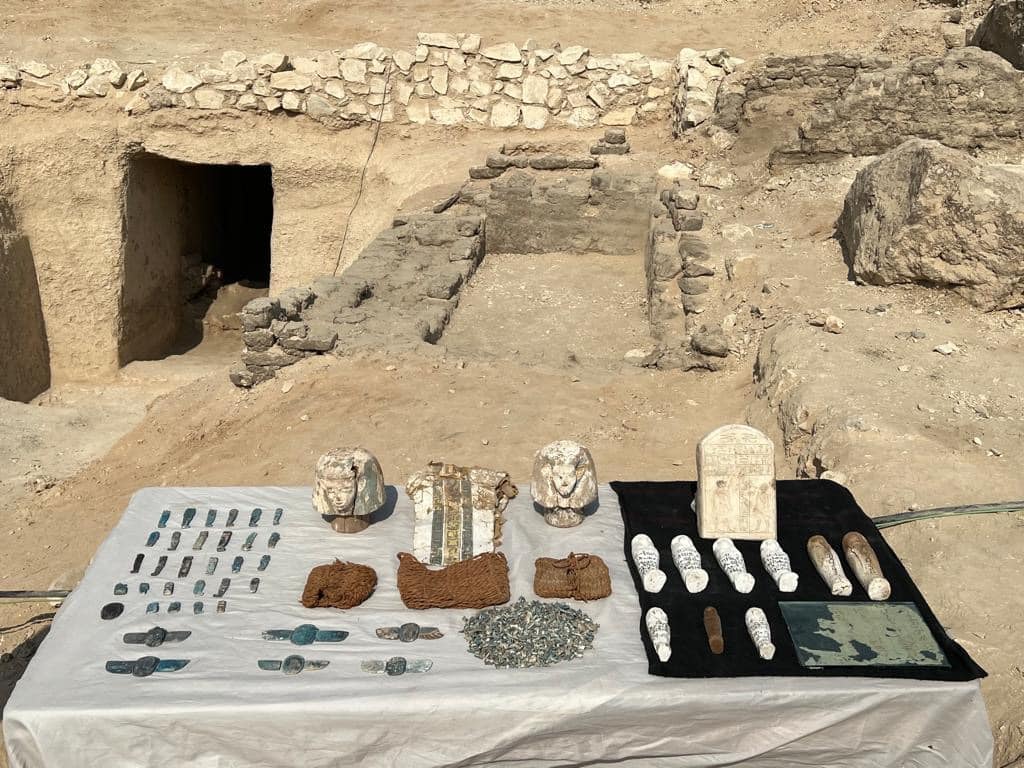The Egyptian archaeological mission, headed by Dr. Mostafa Waziri, Secretary General of the Supreme Council of Antiquities, uncovered a group of family burials during excavations at the necropolis of Dra Abu El Naga, on the Nile’s west bank opposite Luxor. The finds date to the Thirteenth Dynasty, a group of pharaohs that reigned at the beginning of the Egyptian history’s Second Intermediate Period (c. 1700–1550 BCE).

Dr. Waziri explained that this discovery is the first of its kind in that cemetery. It includes a place designated for burials measuring about 50 meters in width, and 70 meters in length.
Within it, the mission succeeded in discovering more than 30 burial wells, similar in design and construction. One of these wells contained the burial of a Minister called Ankhu who lived during the reign of King Sobekhotep II (13th Dynasty). The burial contained a pink granite sarcophagus with the deceased’s name engraved on it. The sarcophagus weighs about 10 tons.
Another well contained a small funerary stele, decorated with a scene depicting the stele’s owner bringing offerings to King Sobekhotep II. According to the inscription, the man held the position of a deputy minister.
Dr. Fathi Yassin, Director General of Upper Egypt Antiquities, indicated that the mission also found a mud-brick building used for placing offerings. Inside it there was a group of white-painted ushabti statues with inscriptions in black ink in hieratic script. The group of finds from there also contained a large group of faience amulets in the shape of scarabs and the Sons of Horus, a large amount of beads, and to hundreds of funerary seals without inscription, which characterize the period before the New Kingdom.
Images released by the Ministry also show an inscribed papyrus fragment among the finds.





